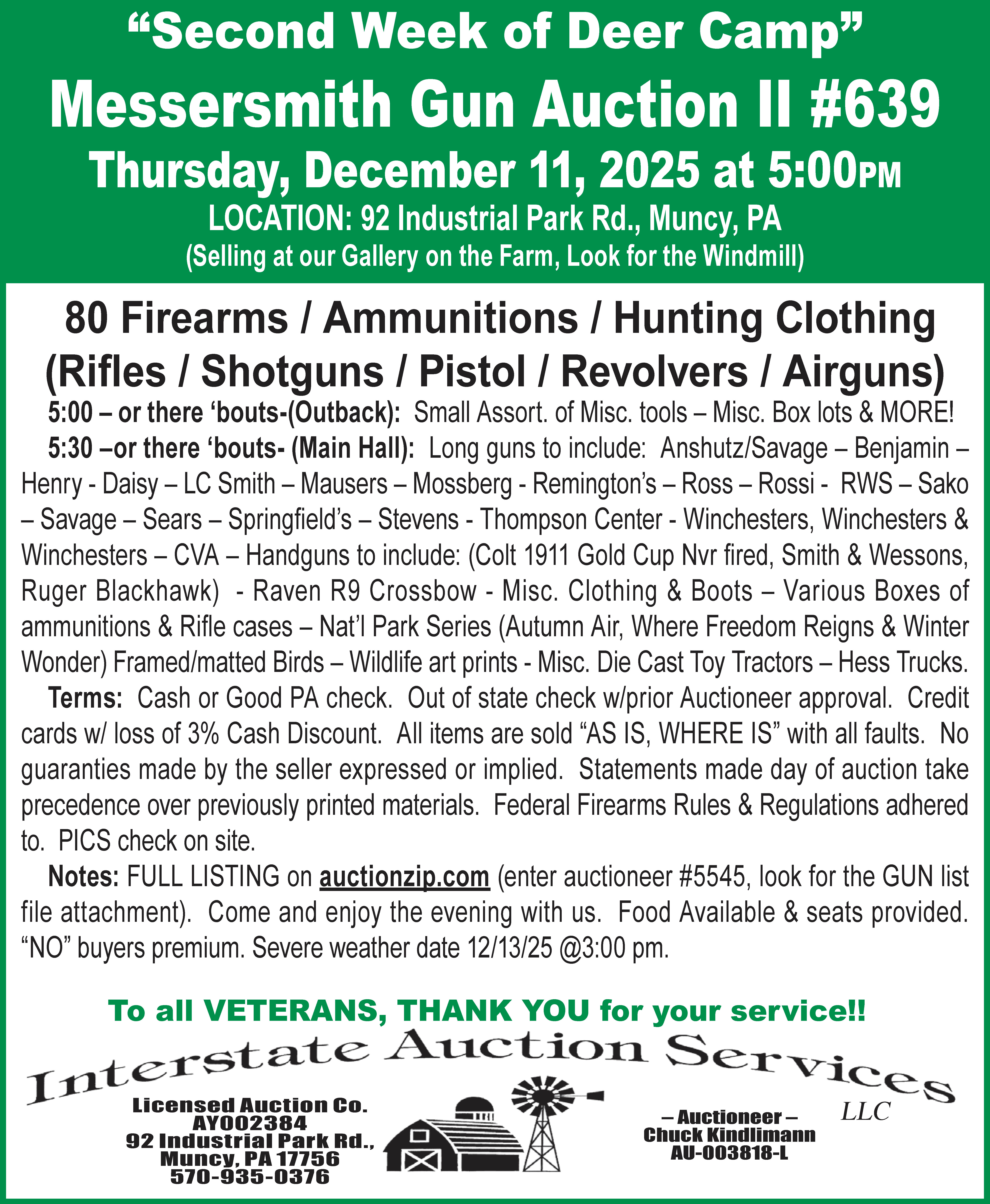I suspect some people are looking at the title of this story and thinking, “You don’t have to tell me it’s snake season; I already know that they are in my yard!”
I’ll admit that I’ve always been intrigued by snakes. As a young kid growing up, I loved to go out and catch snakes and bring them back home to put in my fish aquarium, which was stashed at the back end of our yard next to the woods. In later years, I would occasionally hunt rattlesnakes and sometimes bring one back home alive to show everybody — they were thrilled. Most people probably prefer to avoid snakes, but the same is true for snakes; snakes are nonaggressive and prefer to avoid people, including our venomous species.
Pennsylvania has three venomous snakes, including the Eastern Copperhead, Timber Rattlesnake, and the Eastern Massasauga, and eighteen nonvenomous snake species.
The Timber Rattlesnake is probably the most common of the venomous snakes and is found throughout Pennsylvania except for the southeast corner of the state and the western edge of the state.
The Eastern Copperhead is found all across the state except for the far northern edge of the state, and the Massasauga is found only in a small section of the western edge of the state.
The venomous snake you are most likely to come across is probably the Timber Rattlesnake, but unless you are actually looking for them, you are not likely to see one. I have occasionally spotted one while fishing a mountain stream in the northern, more mountainous part of the state, and I have seen a couple crossing a back mountain road.
Years ago, our rattlesnake population was in serious decline, but due to special regulations protecting our venomous snakes, our rattlesnakes appear to now have a stable population.
I’ll be honest; it baffles me how some so-called “rugged outdoorsmen and hunters” have such a fear of rattlesnakes that they want to kill every one they see — even while out in the middle of nowhere on the side of a remote mountain.
It’s illegal to kill a venomous snake unless you have a venomous snake permit that costs thirty dollars a year, and you are only permitted one rattlesnake of at least 42 inches in length, and the season for taking them is from June 13 through July 31.
For those who are not that familiar with snake identification, it is sometimes easy to misidentify them, sometimes thinking a nonvenomous snake is actually a rattlesnake or copperhead. Naturally, if you are unsure, use caution unless you know how to handle a snake, but here are some things to look for.
All venomous snakes in Pennsylvania possess a pit on each side of the head between the eye and nostril; nonvenomous snakes do not have the pit. Venomous snakes have an elliptical eye pupil, and nonvenomous snakes have a round eye pupil. The head shape of a venomous snake is usually more flattened and triangular shaped than the nonvenomous snake’s head. Venomous snakes have a single row of scales on the underside of the tail, while nonvenomous snakes have a double row of scales on the underside of the tail; that may be a difference you don’t want to pursue. Of course, a rattlesnake will have rattles, and obviously, the copperhead will not.
Certainly, it’s possible to have a rattlesnake or copperhead show up at camp or even at your home, depending on where you live, but more than likely, most of the snakes we are seeing out in the yard are probably nonvenomous.
Because of their color and patterns, the Northern Water Snake and Milksnake are often mistaken for one of the venomous snakes. Some other snakes likely to show up around home are the Garter Snake, Black Racer, and the similar Black Rat Snake.
Don’t worry—it won’t be long before snake season is over, and we’ll be shoveling snow.



